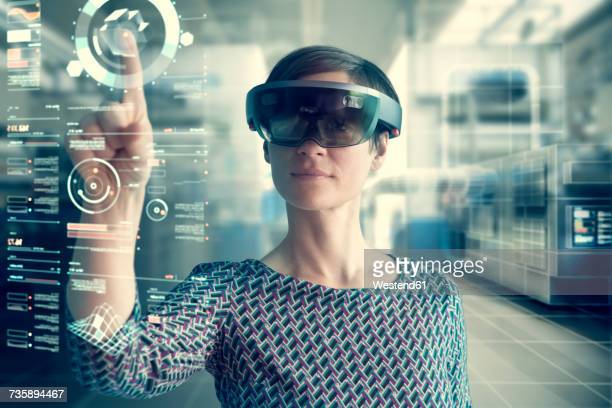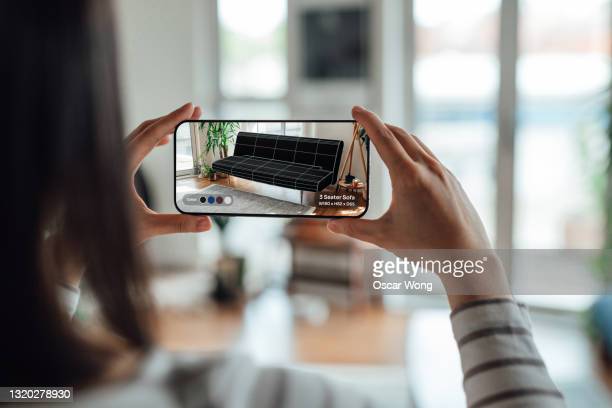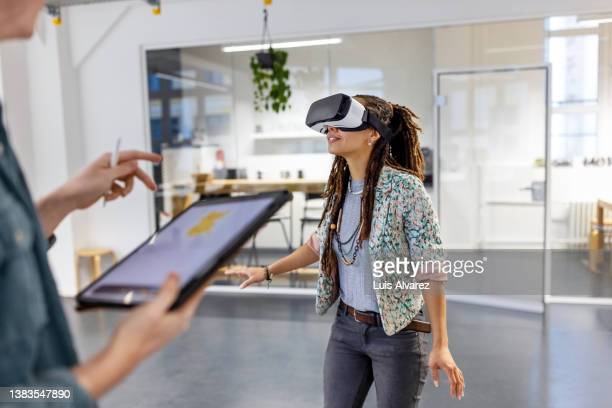Quote:-
“Mixed Reality represents the next evolution in human-computer interaction, providing a bridge between the digital and physical worlds.”
This quote was said by Alex Kipman, the Technical Fellow at Microsoft and the creator of the HoloLens mixed reality headset.
Table of Contents
1.Introduction:
Mixed Reality is a technology that combines elements of both augmented reality (AR) and virtual reality (VR) to create an immersive experience where users can interact with both virtual and real-world objects in real-time. In this section, we will define Mixed Reality, provide a brief history of its development, and highlight how it differs from AR and VR.

Definition of Mixed Reality:
Mixed Reality is a technology that seamlessly blends virtual and real-world environments to create a new environment where users can interact with digital objects while being fully aware of their physical surroundings. This is achieved through the use of sensors, cameras, and other tools that allow for the integration of virtual objects into the real world.
In simpler words
Mixed Reality is a type of technology that lets you see and interact with things that aren’t really there in the real world. It’s like a special pair of glasses that lets you see imaginary things that look like they’re part of the real world. For example, imagine you’re playing a game where a cartoon character appears to be sitting on your real-world sofa. With Mixed Reality, you could see the character as if it was really sitting there, and you could even interact with it like it was a real object.
Another example could be exploring a museum exhibit in Mixed Reality, where you could see and interact with virtual exhibits alongside real artifacts.
In summary, Mixed Reality is a way to blend imaginary things with real things, so you can see and interact with them all together.
Brief History of Mixed Reality:
Mixed Reality has been in development for several decades, with early experiments dating back to the 1960s. However, it wasn’t until the advent of modern computing and display technologies that Mixed Reality began to take shape as a viable technology.
One of the earliest examples of Mixed Reality was the Virtual Fixtures system, which was developed by the U.S. Air Force in the early 1990s. This system used a head-mounted display and a sensor-equipped glove to allow users to interact with virtual objects in a real-world environment.
How Mixed Reality Differs from AR and VR:
Mixed Reality differs from AR and VR in several key ways. AR overlays digital elements onto the real world, while VR creates a completely immersive digital environment. Mixed Reality, on the other hand, blends the two seamlessly to create an interactive experience where virtual and real-world objects can coexist and interact with each other.
Additionally, Mixed Reality relies on real-time tracking and rendering to ensure that virtual objects appear to exist in the same physical space as the user. This requires sophisticated sensors and cameras that can accurately track the user’s movements and position in real-time.
In layman’s term
Augmented Reality (AR) is when computer-generated images or information are added to the real world, making it look like the virtual object is in the real world. For example, Snapchat filters, where you can see a virtual object on your face, is a type of Augmented Reality. To know about augmented Reality please the link https://amateurs.co.in/experience-the-power-of-augmented-reality/

Virtual Reality (VR) is when you wear a special headset that completely immerses you in a digital world that looks and feels like the real world. For example, playing a game in a virtual world where you can move around and interact with objects is a type of Virtual Reality. To know about Virtual Reality please click the link https://amateurs.co.in/explore-the-transformative-power-of-virtual-reality/

Mixed Reality (MR) is a combination of AR and VR. It lets you see virtual objects as if they are really in the real world and lets you interact with them as if they are real objects. Mixed Reality is like wearing a special pair of glasses that can show you digital objects in the real world and let you interact with them. For example, you could see a digital car in your living room and interact with it as if it were a real car.
So, in summary, Augmented Reality is when virtual objects are added to the real world, Virtual Reality is when you are completely immersed in a digital world, and Mixed Reality is a combination of the two where you can see and interact with virtual objects as if they are really in the real world.
2.How Mixed Reality Works:
Mixed Reality relies on a combination of hardware and software to create an immersive and interactive experience. In this section, we will explore the key components of Mixed Reality technology and how they work together.
Sensors and Cameras:
One of the key components of Mixed Reality is sensors and cameras that are used to track the user’s movements and position in the real world. This allows virtual objects to be integrated into the user’s environment in a way that is natural and intuitive.
Sensors and cameras can be integrated into a variety of devices, including head-mounted displays, smartphones, and tablets. These devices use a combination of accelerometers, gyroscopes, and other sensors to track the user’s movements and position in real-time.
Real-Time Tracking and Rendering:
In order for Mixed Reality to be effective, virtual objects must appear to exist in the same physical space as the user. This requires real-time tracking and rendering of the user’s environment, which is achieved through a combination of sensors and software.
Real-time tracking and rendering allow virtual objects to move and interact with the user’s environment in a natural and intuitive way. For example, a virtual object might appear to rest on a real-world surface, or it might move in response to the user’s movements.
Integration of Virtual and Real-World Objects:
The final component of Mixed Reality is the integration of virtual and real-world objects. This is achieved through software that can identify and track real-world objects, as well as tools for creating and rendering virtual objects.
Virtual objects can be created using a variety of tools, including 3D modeling software and game engines. These objects can then be integrated into the user’s environment using real-time tracking and rendering, allowing them to interact with real-world objects in a seamless and intuitive way.
Overall, Mixed Reality technology combines sensors, cameras, software, and rendering techniques to create an immersive and interactive experience where virtual and real-world objects can coexist and interact with each other.
3.Applications of Mixed Reality:
Mixed Reality has a wide range of applications across various industries, from entertainment and gaming to healthcare and medicine. In this section, we will explore some of the most common applications of Mixed Reality.
Entertainment and Gaming:
Mixed Reality has a lot of potential in the entertainment and gaming industry, allowing users to immerse themselves in new and exciting digital worlds. For example, Mixed Reality can be used to create interactive games and experiences that allow users to explore new worlds and interact with virtual objects in a way that feels natural and intuitive.
Education and Training:
Mixed Reality can also be used for educational and training purposes. For example, Mixed Reality can be used to create interactive simulations that allow users to practice real-world scenarios in a safe and controlled environment. This can be particularly useful for training in fields such as medicine, engineering, and aviation.
Manufacturing and Design:
Mixed Reality can also be used in manufacturing and design. For example, designers and engineers can use Mixed Reality to visualize and interact with 3D models in real-time, allowing them to make changes and adjustments quickly and easily. Mixed Reality can also be used in manufacturing to help workers visualize complex processes and procedures.
Healthcare and Medicine:
Mixed Reality has a lot of potential in the healthcare and medicine industry. For example, Mixed Reality can be used to create interactive simulations that allow medical professionals to practice complex procedures and surgeries. Mixed Reality can also be used to create immersive experiences that can help patients manage pain and anxiety.
Overall, Mixed Reality has a wide range of applications across various industries, from entertainment and gaming to healthcare and medicine. As Mixed Reality technology continues to evolve, we can expect to see even more innovative applications and use cases in the future.
4.Mixed Reality Devices and Platforms:
Mixed Reality can be experienced through a variety of devices and platforms. In this section, we will explore some of the most popular Mixed Reality devices and platforms currently available.
Microsoft HoloLens:
The Microsoft HoloLens is one of the most well-known Mixed Reality devices. It is a head-mounted display that allows users to interact with virtual objects in the real world. The HoloLens uses a combination of sensors, cameras, and holographic technology to create an immersive and interactive experience. The link to the official website of Microsoft HoloLens: https://www.microsoft.com/en-us/hololens
Magic Leap:
Magic Leap is another Mixed Reality device that has gained a lot of attention in recent years. Like the HoloLens, Magic Leap is a head-mounted display that allows users to interact with virtual objects in the real world. Magic Leap uses a combination of sensors and spatial computing technology to create a seamless and immersive experience. The official website of Magic Leap: https://www.magicleap.com/
Oculus Quest:
The Oculus Quest is a virtual reality (VR) headset that also has Mixed Reality capabilities. The Quest uses a combination of cameras and sensors to track the user’s movements and position in real-time. This allows virtual objects to be integrated into the user’s environment in a way that feels natural and intuitive. The official website of Oculus Quest: https://www.oculus.com/quest/
Google Glass:
Google Glass is a smart eyewear device that can also be used for Mixed Reality experiences. While Google Glass was originally designed for augmented reality (AR) applications, it can also be used for Mixed Reality experiences. Google Glass uses a combination of sensors and cameras to track the user’s movements and position in real-time, allowing virtual objects to be integrated into the user’s environment. Here is the link to the official website of Google Glass: https://www.google.com/glass/start/.
Overall, there are a variety of Mixed Reality devices and platforms available, from head-mounted displays to smart eyewear. Each device has its own unique features and capabilities, and the choice of device will depend on the specific use case and application.
5.Future of Mixed Reality:
Mixed Reality technology is still in its early stages, and there is a lot of potential for future advancements and developments. In this section, we will explore some of the potential advancements and developments of Mixed Reality, as well as the impact on industries and society, and the challenges and limitations that need to be addressed.
Potential Advancements and Developments:
As Mixed Reality technology continues to evolve, we can expect to see advancements in areas such as:
Improved hardware, including smaller and more lightweight devices, better battery life, and higher resolution displays.
More sophisticated sensors and cameras, which will allow for more accurate tracking and rendering of virtual objects in the real world.
Advancements in software and AI, which will allow for more realistic and interactive virtual objects, as well as more natural and intuitive user interfaces.
Increased connectivity, which will allow for more seamless integration between virtual and real-world environments.
Impact on Industries and Society:
Mixed Reality has the potential to have a significant impact on various industries and society as a whole. Some potential impacts include:
Transforming the way we work, learn, and interact with each other, allowing for more immersive and engaging experiences.
Enhancing productivity and efficiency in industries such as manufacturing, healthcare, and education.
Creating new opportunities for entertainment, gaming, and other forms of media.
Changing the way we perceive and interact with the world around us, potentially leading to new forms of art, design, and expression.
Challenges and Limitations:
While Mixed Reality has a lot of potential, there are also several challenges and limitations that need to be addressed. Some of these include:
The cost of hardware and software, which can be prohibitively expensive for many users and organizations.
The need for more reliable and robust connectivity, which is essential for real-time tracking and rendering of virtual objects.
The potential for privacy and security concerns, particularly in areas such as healthcare and education where sensitive information may be involved.
The need for more research and development to address issues such as motion sickness and other potential negative effects of extended use.
Overall, the future of Mixed Reality is exciting and full of potential. As the technology continues to evolve and mature, we can expect to see even more innovative applications and use cases in the years to come.
6.Conclusion:
Mixed Reality is a rapidly evolving technology that has the potential to transform the way we interact with the world around us. By combining elements of both augmented reality and virtual reality, Mixed Reality offers a unique and immersive experience that allows users to interact with both virtual and real-world objects in real-time.
In this article, we have explored the definition of Mixed Reality, its brief history, and how it differs from AR and VR. We have also discussed how Mixed Reality works, the applications of Mixed Reality, and some of the most popular Mixed Reality devices and platforms. Finally, we have explored the future of Mixed Reality, including potential advancements and developments, the impact on industries and society, and the challenges and limitations that need to be addressed.
Final Thoughts and Considerations:
As Mixed Reality technology continues to evolve, it will be interesting to see how it is adopted and integrated into various industries and applications. While there are challenges and limitations that need to be addressed, the potential benefits of Mixed Reality are significant, and the future looks promising.
If you are interested in exploring Mixed Reality further, there are many resources available online, including tutorials, forums, and communities of like-minded individuals. Whether you are a developer, a designer, or simply a curious user, there are many opportunities to learn and explore the exciting world of Mixed Reality.
7.Resources :-
Microsoft Mixed Reality – Microsoft’s official website for their Mixed Reality platform, which includes information on the HoloLens headset and related technologies: https://www.microsoft.com/en-us/mixed-reality
Magic Leap – The website for Magic Leap, a company that creates Mixed Reality headsets and software: https://www.magicleap.com/
Oculus VR – The website for Oculus, a company that creates VR headsets and software, including the Oculus Quest headset which includes some Mixed Reality capabilities: https://www.oculus.com/
AR Insider – An online publication that covers Augmented Reality and Mixed Reality news and developments: https://arinsider.co/

Your point of view caught my eye and was very interesting. Thanks. I have a question for you.
Very good post! We will be linking to this great content on our site.
Keep up the great writing.
Simply desire to say your article is as astounding.
The clarity for your submit is just excellent and i could assume you are an expert on this subject.
Well together with your permission let me to grasp your feed to
keep updated with impending post. Thanks a million and please continue the rewarding work.
My family members all the time say that I am wasting my time here at web, except
I know I am getting experience all the time by reading thes fastidious articles.